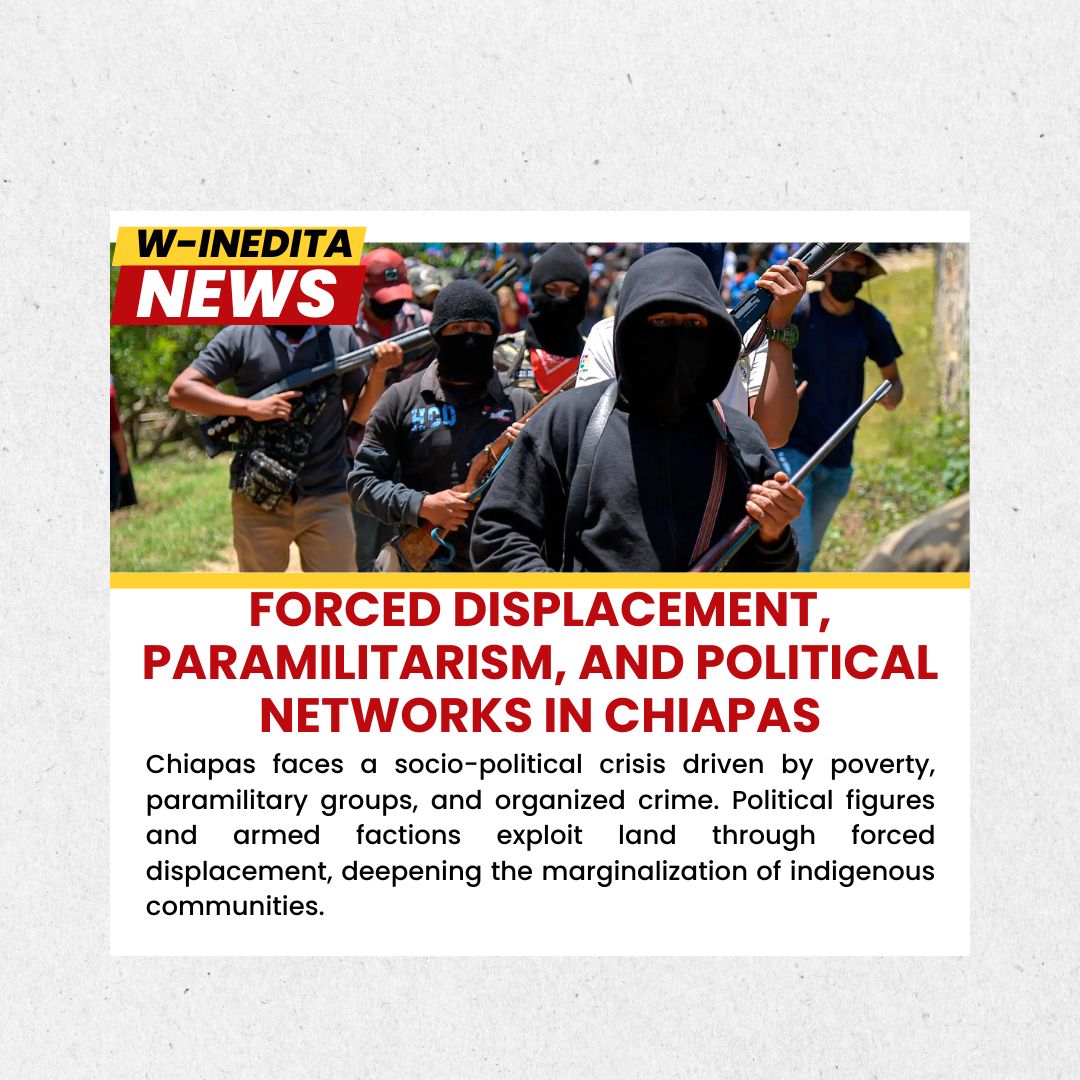IntroductionChiapas faces a complex social, economic, and political crisis, exacerbated by the dismantling of the Zapatista Army of National Liberation (EZLN) and the emergence of new armed groups and paramilitary structures. Among these are organizations like the UGOGCP (formerly Paz y Justicia) and the so-called Kármicos, which are actively involved in forced displacement and territorial control. Indigenous communities are subjected to violence, land dispossession, and extreme poverty, perpetuating a cycle of marginalization and vulnerability.
Socioeconomic Context of Chiapas
With 75.5% of the population living in poverty and 29% in extreme poverty, Chiapas ranks among the poorest states in Mexico. Approximately 44.1% of residents earn incomes below the extreme poverty threshold. Additionally, the state suffers from a 21.3% illiteracy rate, the highest in the country, with indigenous women being the most affected: 26 out of every 100 women aged 15 and older are unable to read or write.
In 2024, the average monthly wage in Chiapas was 5,250 pesos, far below the minimum needed to meet basic needs.
This economic fragility makes indigenous youth particularly vulnerable to recruitment by armed groups and cartels, such as the Sinaloa Cartel and the Jalisco New Generation Cartel (CJNG). These criminal organizations offer up to 30,000 pesos in monthly payments, turning drug trafficking into an attractive alternative livelihood amid government neglectS
Paramilitary Groups and Forced Displacement
The UGOGCP and Kármicos are key players in the ongoing forced displacement in municipalities like Tila. The UGOGCP, initially aligned with the Institutional Revolutionary Party (PRI) under the name Paz y Justicia, employed violence and intimidation to displace entire communities, securing control of lands for both economic exploitation and illegal activities. Displaced lands are converted into strategic assets for drug cultivation and trafficking routes
The case of Tila exemplifies these tactics.
Indigenous communities that resisted alignment with the group’s interests were persecuted and expelled, losing their homes and ancestral lands. This pattern of violence has expanded, showing how paramilitary groups and cartels exploit institutional gaps and impunity to consolidate power.
Political Connections and Territorial.
Expansion UGOGCP’s connections with local and national political figures have been instrumental in maintaining its influence. While originally aligned with the PRI, recent developments suggest collaboration with political actors from other parties, including figures connected to the PRD. This influence extends beyond Chiapas, with reported attempts to seize properties in other states, such as the State of Mexico, by replicating the same tactics of intimidation and land appropriation seen in the southThe involvement of political figures in these operations highlights the intersection between organized crime and politics.
These alliances allow the groups to target key infrastructure, such as markets and transportation routes, expanding criminal networks nationwide. Political actors benefit from controlling strategic assets, using them for both economic leverage and political influence.
The situation in Chiapas reflects a deep-rooted crisis where paramilitarism, organized crime, and politics converge. Forced displacement is not merely an outcome of agrarian disputes but a deliberate strategy to accumulate economic and territorial power. Indigenous communities are trapped in cycles of violence and exclusion, losing not only their homes but also access to their ancestral rights. Addressing this crisis requires dismantling networks of political complicity, enforcing accountability, and protecting vulnerable communities from further exploitation.
